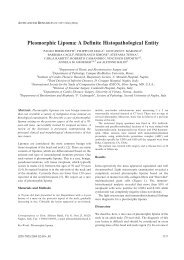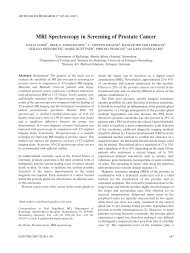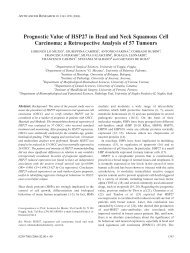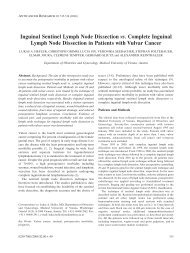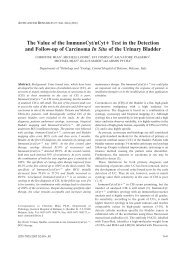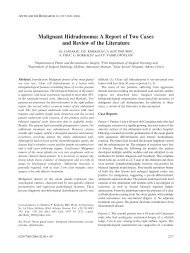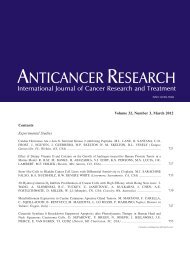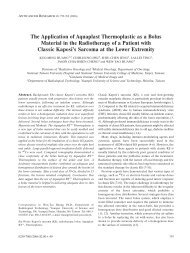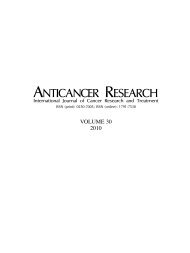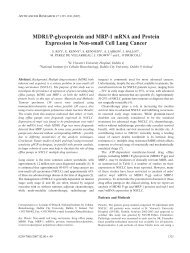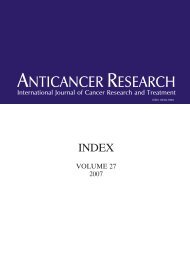ABSTRACTS OF THE 21st ANNUAL MEETING OF THE ITALIAN ...
ABSTRACTS OF THE 21st ANNUAL MEETING OF THE ITALIAN ...
ABSTRACTS OF THE 21st ANNUAL MEETING OF THE ITALIAN ...
Create successful ePaper yourself
Turn your PDF publications into a flip-book with our unique Google optimized e-Paper software.
Jean Marc Lobaccaro 2 , Antonio Alberto Sinisi 1 ,<br />
Domenico Prezioso 3 , Fabrizio Iacono 3 ,<br />
Ester Illiano 3 and Gennaro Iapicca 3<br />
1 Endocrinologia, Dipartimento di Scienze Cardiotoraciche,<br />
Seconda Università di Napoli, Napoli, Italy;<br />
2 Endocrinology, Clermont University, Aubiere, France;<br />
3 Clinica Urologica Universitá Federico II Napoli, Napoli, Italy<br />
Aim: Oxysterols may exert antiproliferative effects on several<br />
cancer cells, including prostate cells (PC), acting on liver X<br />
receptors alpha and beta (LXRalpha and LXRbeta). Here, we<br />
evaluated the presence of LXRs and the effects of a synthetic<br />
oxysterol (T09) using the androgen-dependent cell lines EPN<br />
and a stabilized line, derived from prostate cancer (CPEC).<br />
Materials and Methods: Starved cultures were treated with T09<br />
(3 or 10 μM) or DMSO and harvested 72 h after treatment,<br />
stained with propidium iodide for flow cytometry of cell cycle<br />
distribution by FACSCalibur or recovered for protein extraction<br />
for Western blot analysis or for mRNA extraction for<br />
quantitative real-time PCR. Cells grown on slides were also<br />
treated and harvested after 72 h for TUNEL assay. Results:<br />
LXRalpha and beta transcripts were found in both EPN and<br />
CPEC with higher LXRalpha levels in CEPC (p



